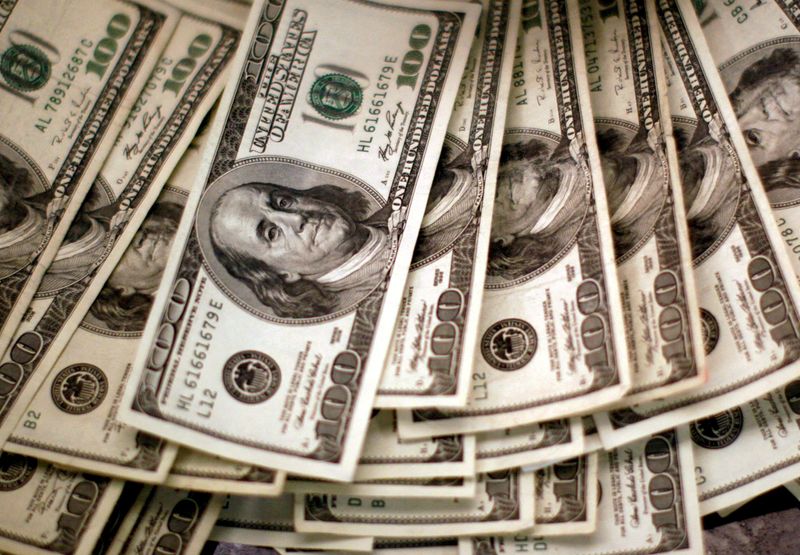
- Общее
Dollar stable ahead of US GDP data
Do you want to know how to make money from this?
Register for free and get expert advice, access to a training course and webinars.
Key points:
- The US dollar remained broadly stable near a six-week high.
- Expectations for an early Fed rate cut have dropped after opposition from central banks and already published economic data that highlighted the strength of the US economy.
- In the US, GDP and other economic reports are expected this week, which will allow financial players to understand which way interest rates will move.
The U.S. dollar stayed relatively unchanged on Thursday, hovering near a six-week peak as investors and traders remained cautious ahead of economic data releases scheduled for the week. This data will provide crucial insights into the direction of interest rates, a key factor influencing currency movements.
The dollar index, a measure of the U.S. currency against six major peers, inched up 0.06% to 103.35, just shy of its six-week high of 103.82 set on Tuesday.
The latest data on the US economy will likely influence the Fed’s decision
The upcoming release of early fourth-quarter U.S. gross domestic product (GDP) data is widely expected to show a growth rate of around 2%, although estimates range from 0.8% to 2.8%. Even at the higher end of this range, this would represent a significant deceleration from the 4.9% growth recorded in the July-September quarter.
Despite the slowdown, the report is likely to confirm that the U.S. economy has averted a recession in 2023 and is projected to experience moderate inflation in the final quarter. This has fueled expectations of a rate cut by the Federal Reserve (Fed) sometime in the first half of 2024.
“The US dollar depends on how markets perceive the Fed’s rate path, and I don’t see that dynamic changing in the near future.”
– comments Kieran Williams, head of Asian FX at InTouch Capital Markets.
In recent weeks, the dollar index has risen about 2% as traders have scaled back their expectations for an early rate hike by the Fed, following opposition from other central banks and already-released economic data that underscores the strength of the U.S. economy.
Beyond GDP, other key U.S. economic reports are due out this week, including personal consumption expenditures (PCE) data scheduled to be released on Friday.
While the Fed is not expected to make any policy changes next week, market participants will closely scrutinize Chairman Jerome Powell’s comments for any clues on whether the U.S. central bank is ready to embark on a rate-cutting cycle.
Dynamics of major currencies
The euro edged lower to $1.0877 before the European Central Bank (ECB) meeting, where policymakers are anticipated to maintain interest rates unchanged. Market attention will also be on how resolutely officials counter expectations for a substantial rate reduction, with markets anticipating a 130 basis point cut by the end of the year.
The Australian dollar and New Zealand dollar attempted to sustain recent gains. The Australian dollar last traded at $0.6575, while the New Zealand dollar was valued at $0.61085.
The yen depreciated 0.18% to 147.77 per dollar, relinquishing some of its Wednesday’s gains as traders factored in the Bank of Japan’s hawkish stance. On Tuesday, Bank of Japan Governor Kazuo Ueda stated that the prospects of achieving the central bank’s inflation target were gradually improving. This heightens expectations that the nation may soon depart from its ultra-accommodative monetary policy.
Do you want to know
How to make money from the news
Register for free and get:
- Expert consultation;
- Access to the training course;
- Opportunity to participate in webinars

